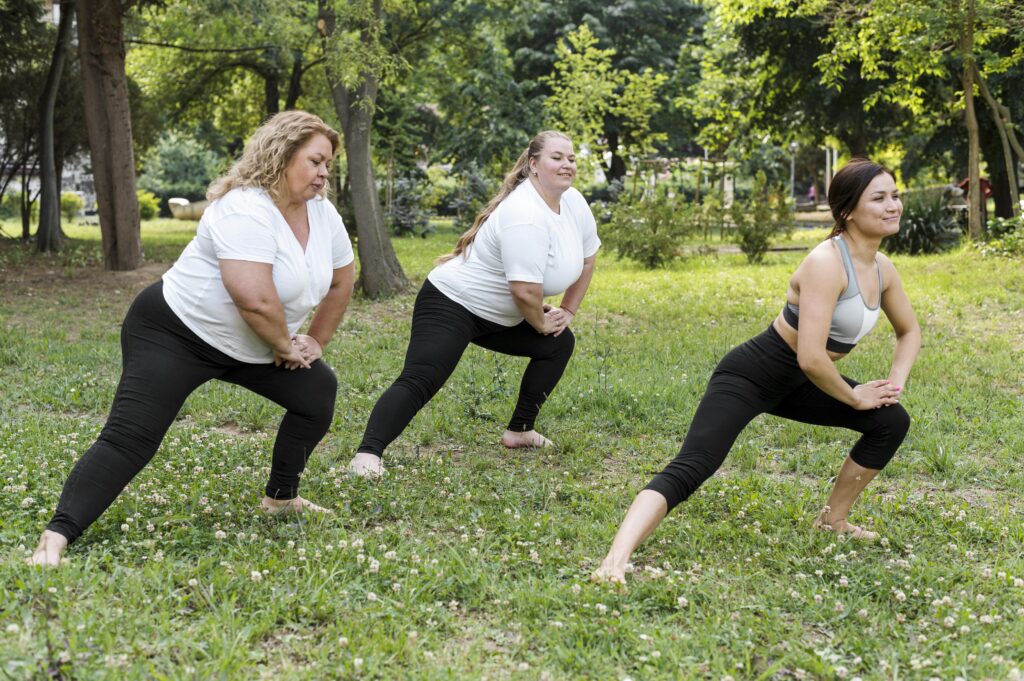
Starting an exercise routine can be daunting, especially for those dealing with obesity. The key is to take small, manageable steps and gradually build up strength and stamina. In this article, we’ll explore:
- Understanding the Importance of Exercise for All Body Sizes
- Setting Realistic Fitness Goals
- Choosing the Right Exercise for Your Body
- Overcoming Common Barriers to Exercise
- Listening to Your Body and Avoiding Injury
- Creating a Supportive Environment
- Tracking Progress and Celebrating Success
Stay tuned as we dive into each of these essential aspects to help you embark on a successful and fulfilling fitness journey.
Understanding the Importance of Exercise for All Body Sizes
Exercise plays a crucial role in maintaining overall health, regardless of body size. For those with obesity, regular physical activity can help manage weight, reduce the risk of chronic diseases, and improve mental health. Benefits of exercise for obesity management include lowering blood pressure, improving heart health, and boosting mood through the release of endorphins. Remember, everyone starts somewhere, and recognizing the importance of exercise for all body sizes is the first step.
Setting Realistic Fitness Goals
When starting an obesity workout routine, it’s essential to set achievable and realistic fitness goals. Rather than aiming for a complete transformation overnight, focus on small, incremental changes. For instance, try to incorporate 10-minute walks into your daily routine and gradually increase the duration as your stamina builds. Obesity exercise plans should include both short-term and long-term goals. This approach helps you stay motivated and makes the journey less overwhelming.
Choosing the Right Exercise for Your Body
Finding the right type of exercise that suits your body and preferences is fundamental. Low-impact exercises for obese individuals, such as swimming, cycling, or walking, are great starting points. These activities are gentle on the joints yet effective in burning calories and building endurance. When it comes to safe exercises for obese beginners, consider starting with low-intensity workouts and slowly increasing the intensity as you become more comfortable. The key is to enjoy what you’re doing to maintain consistency.

Overcoming Common Barriers to Exercise
Starting an exercise routine with obesity can come with unique challenges. Barriers can range from physical limitations to psychological hurdles like fear of judgment. Here are some starting exercise with obesity tips to consider: start in a comfortable, private environment, use at-home workout videos, or seek out beginner-friendly fitness classes. Remember, everyone has their struggles, but pushing past these barriers is crucial for achieving long-term success.
Listening to Your Body and Avoiding Injury
One of the most important aspects of exercising, especially when dealing with obesity, is listening to your body. It’s not uncommon to feel discomfort, but pain is a signal to stop. To avoid injury, include low-impact exercises for obese individuals like yoga or water aerobics, which can improve flexibility and strength without stressing the joints. Additionally, always warm up before starting your workout and cool down afterward. Proper technique is also crucial, so don’t hesitate to seek guidance if you’re unsure.
Creating a Supportive Environment
A supportive environment can make a significant difference when beginning an exercise routine. Whether it’s friends, family, or a fitness community, having a support system can provide motivation and accountability. Share your goals and progress with them; this creates a sense of commitment. Furthermore, try to exercise with a buddy or join a group that focuses on exercise motivation for overweight individuals. Feeling supported and understood makes the fitness journey more enjoyable and sustainable.
Tracking Progress and Celebrating Success
Tracking your progress is essential in maintaining motivation and recognizing improvements. Keep a journal detailing your workouts, including what exercises you did, how long you exercised, and how you felt afterward. This helps in creating fitness goals for obese people and allows you to see improvement over time. Don’t forget to celebrate your successes, no matter how small they may seem. Each step forward is a victory and drawing attention to these wins promotes a positive mindset.
“Success is not final, failure is not fatal: It is the courage to continue that counts.” — Winston Churchill

Embarking on a fitness journey with obesity may seem challenging, but with patience, persistence, and the right strategies, it is definitely achievable. By understanding the importance of exercise, setting realistic goals, choosing the right types of activities, overcoming barriers, being attentive to your body, creating a supportive atmosphere, and tracking your progress, you can build a sustainable and rewarding routine. Every small step counts, and celebrating your progress along the way will keep you motivated. Remember, you are not alone in this journey—many people have successfully managed obesity through exercise, and so can you. Keep moving forward and embrace the changes as they come!